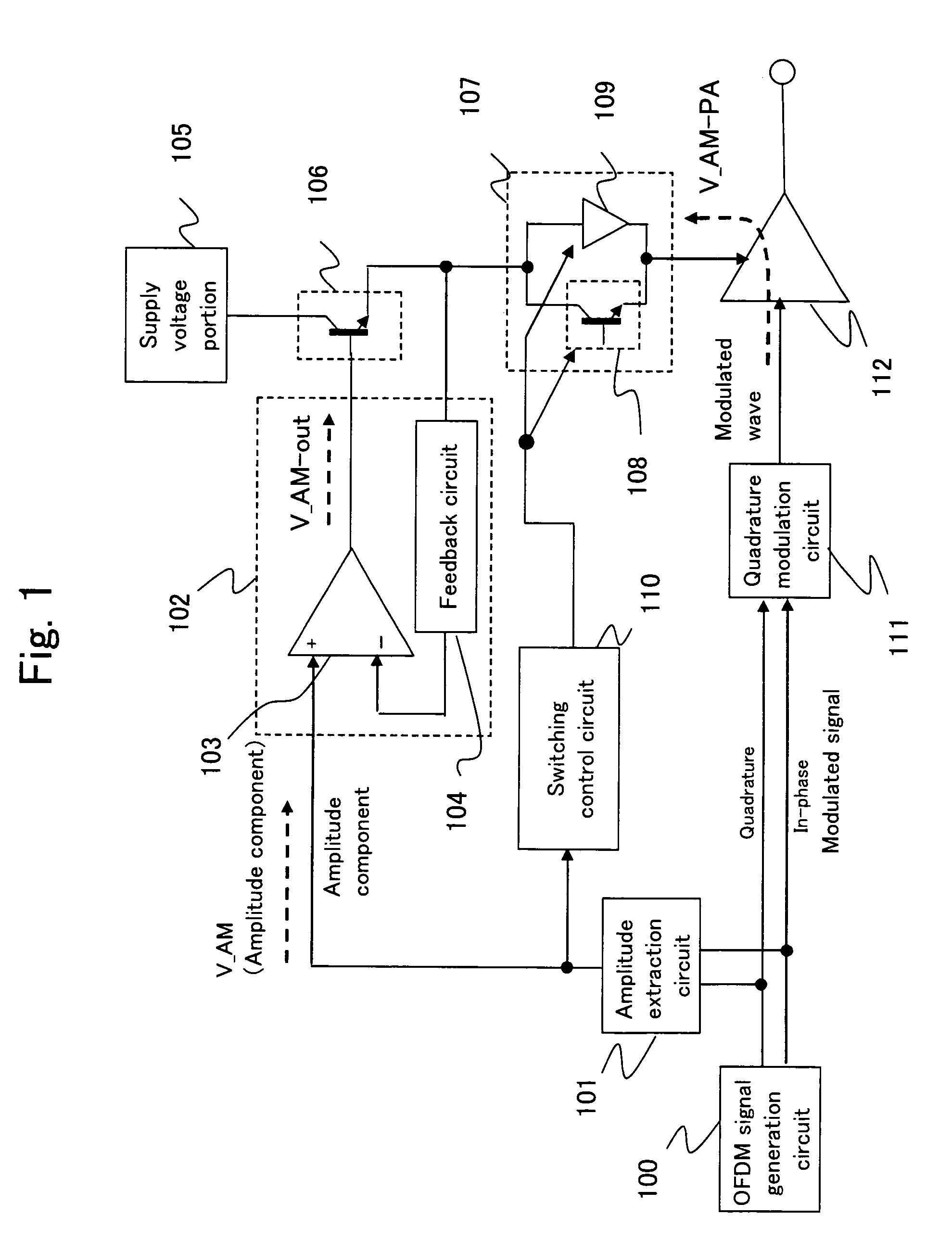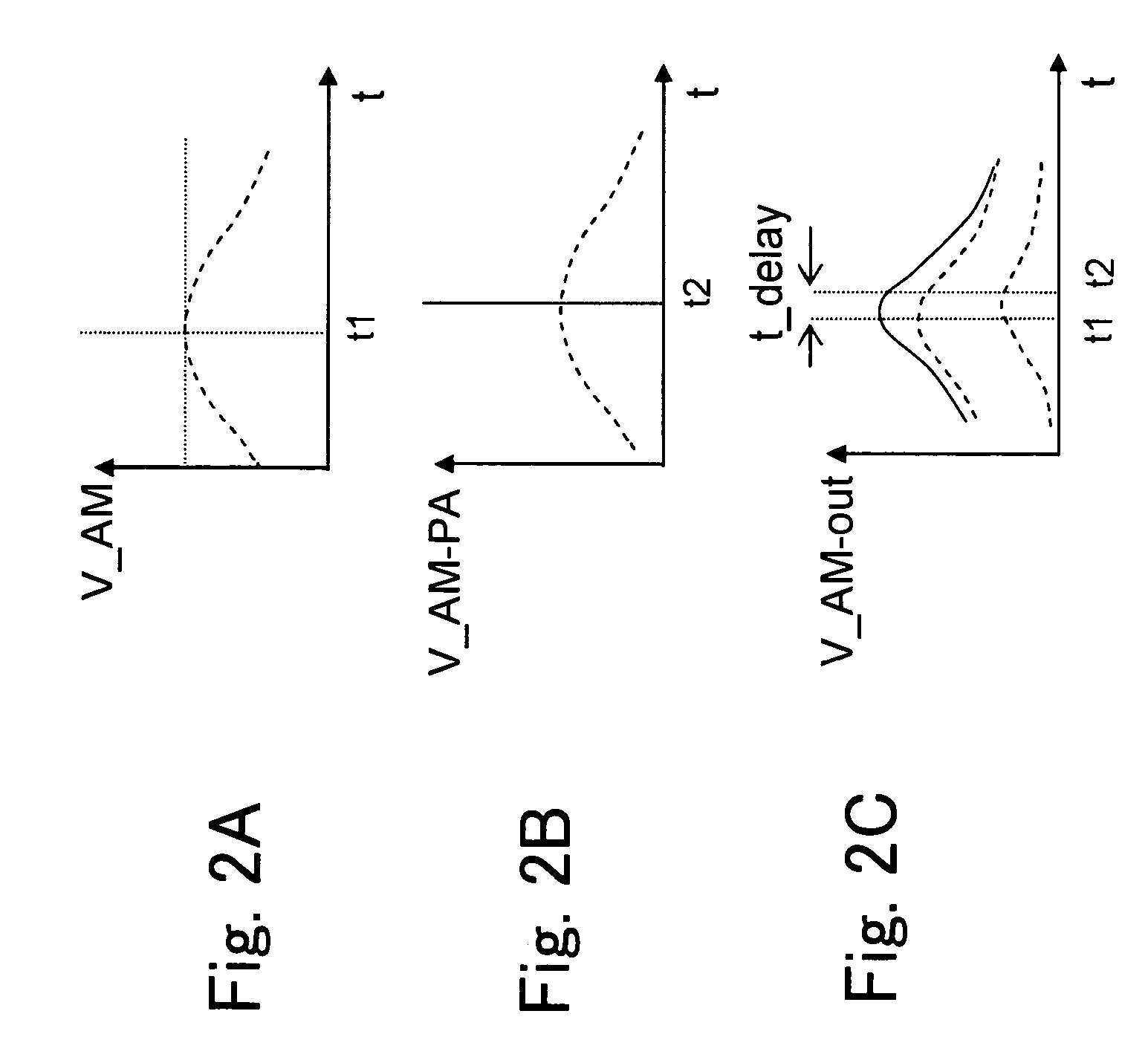Transmitter
a transmitter and receiver technology, applied in the field of radio transmitters, can solve the problems of short continuous usable time, insufficient practical use, and high efficiency cannot be expected of the conventional class-a and class-ab radio-frequency power amplifiers, and achieve the effect of reducing the delay of the amplitude component in the group
- Summary
- Abstract
- Description
- Claims
- Application Information
AI Technical Summary
Benefits of technology
Problems solved by technology
Method used
Image
Examples
first embodiment
[0069]A first embodiment of the present invention will be described with reference to the drawings. The embodiment of the present invention will be described with an IEEE 802.11a wireless LAN system as an example.
[0070]FIG. 1 is a block diagram of a transmitter according to the first embodiment of the present invention realizing a transmitter using an EER method.
[0071]This transmitter comprises, as shown in FIG. 1, an OFDM signal generation circuit 100, an amplitude extraction circuit 101, an amplitude amplification circuit 102, a supply voltage portion 105, an emitter follower 106, a voltage adjustment circuit 107, a switching control circuit 110, a quadrature modulation circuit 111 and a radio-frequency power amplifier 112.
[0072]The OFDM signal generation circuit 100 generates an OFDM-modulated signal, and corresponds to the modulated signal generating means.
[0073]The amplitude amplification circuit 102 comprises, for example, an operational amplifier 103 and a feedback circuit 10...
second embodiment
[0127]FIG. 7 is a block diagram of a transmitter according to a second embodiment of the present invention. In FIG. 7, the same elements as those of FIG. 1 are denoted by the same reference numerals and descriptions thereof are omitted.
[0128]This transmitter is different from that of the first embodiment in that as shown in FIG. 7, the switching control circuit 110 performs the switching control of the voltage adjustment circuit 107 not according to the amplitude component but according to at least one predetermined power level control signal for specifying the power level of the OFDM modulated signal or at least one data rate control signal for specifying the data rate of the OFDM modulated signal which control signals are outputted from the OFDM signal generation circuit 100.
[0129]The power level control signal and the data rate control signal will be described. In communication systems, in order that the speech quality between communication systems is compensated for so as to be ...
PUM
 Login to View More
Login to View More Abstract
Description
Claims
Application Information
 Login to View More
Login to View More - R&D
- Intellectual Property
- Life Sciences
- Materials
- Tech Scout
- Unparalleled Data Quality
- Higher Quality Content
- 60% Fewer Hallucinations
Browse by: Latest US Patents, China's latest patents, Technical Efficacy Thesaurus, Application Domain, Technology Topic, Popular Technical Reports.
© 2025 PatSnap. All rights reserved.Legal|Privacy policy|Modern Slavery Act Transparency Statement|Sitemap|About US| Contact US: help@patsnap.com



